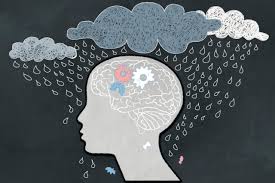
Understanding Gabapentin 400mg and 800mg: Dosages and Benefits in Epilepsy Treatment
One common anticonvulsant drug that is essential to the treatment of epilepsy is gabapentin. This article explores the dosages and advantages of gabapentin, with a particular emphasis on the 400 mg and 800 mg forms that are frequently recommended for the treatment of epilepsy. It is crucial for both patients and healthcare providers to comprehend the subtleties of gabapentin dosages, its mode of action, effectiveness in managing seizures, possible adverse effects, and prescribing guidelines. Through investigating the therapeutic potential of gabapentin in the management of epilepsy, our goal is to offer significant insights into improving patient care and treatment outcomes.
Overview of Gabapentin’s Use in the Treatment of Epilepsy
A Synopsis of Gabapentin
Neurontin, another name for gabapentin, is a drug that is frequently used to treat epilepsy. It is a member of the anticonvulsant medication class, which reduces excessive nerve activity in the brain.
Gabapentin’s Function in the Management of Epilepsy
Because it helps to prevent and control seizures, gabapentin is an essential part of the management of epilepsy. For those with epilepsy, it is frequently used in addition to other seizure drugs in order to enhance overall seizure control and quality of life.
Gabapentin 400 mg is administered with other medications to control and prevent Epilepsy. In addition, people who have had shingles, a painful rash caused by the herpes zoster virus, might use it to relieve nerve discomfort. Gabapentin is also known as an anticonvulsant or an antiepileptic medication.
Doses of gabapentin: 400 mg vs. 800 mg
Variations in Doses
There are several dosages of gabapentin available; the two most popular levels are 400mg and 800mg. The variation in dosages enables medical professionals to customize treatment regimens to meet the specific requirements of each patient, taking into account variables like tolerance and seizure frequency.
Factors Affecting the Choice of Dosage
The patient’s age, weight, kidney function, and epilepsy severity are among the parameters that affect the choice of the right dosage. In order to establish the most effective dosage for each patient, healthcare providers must carefully consider these factors.
Gabapentin’s Mode of Action in the Treatment of Epilepsy
How the Human Body Reacts to Gabapentin
Gamma-aminobutyric acid (GABA) is one of the neurotransmitters in the brain whose activity is modulated by gabapentin. it helps lessen aberrant electrical activity in the brain that can cause seizures by raising GABA levels.
Particular Impacts on Epileptic Episodes
Gabapentin directly targets the excessive electrical signals that cause seizures in the treatment of epilepsy. Gabapentin reduces the chance and intensity of epileptic seizures by taming nerve activity and inhibiting neurons from firing quickly.
Advantages and Effectiveness of Gabapentin in the Treatment of Epilepsy
Efficiency in Controlling Seizures
Numerous epileptic patients have demonstrated improved seizure frequency and intensity when taking. It can greatly enhance the quality of life for those who have this illness by consistently reducing seizures.
Extra Advantages for People with Epilepsy
Apart from its principal function of controlling seizures, may provide additional advantages to those with epilepsy, like elevated mood, enhanced sleep, and decreased neuropathic pain. These further advantages enhance the general health of those receiving gabapentin treatment for epilepsy.
Gabapentin 800mg is a drug that is often used to treat specific types of seizures and nerve pain. It is classified as an anticonvulsant or antiepileptic medication. Gabapentin Tablets are also used to treat postherpetic neuralgia (nerve pain that develops after an incident of shingles) and restless legs syndrome. The dosage of Tablets varies depending on the illness being treated, the patient’s medical history, and their response to the medication. The 800mg dose of tablet is relatively high, and it is critical to take the prescription exactly as advised by your doctor.
Gabapentin Dosage Side Effects and Things to Consider
Common Gabapentin Side Effects
Upon beginning gabapentin therapy, common side effects that may manifest are somnolence, vertigo, and impaired motor coordination.
Keeping an eye on and handling side effects
It’s critical to let your healthcare professional know about any negative effects you encounter. They can provide advice on how to manage side effects, like modifying the dosage or when to take medication.
Protocols for Gabapentin Prescription for Epilepsy
Suggested Initiation and Titration Dosage
In order to get the best seizure control when prescribing gabapentin for epilepsy, medical professionals usually start with a low dose and progressively increase it. Titration is the process of minimizing adverse effects and figuring out the best dosage for each patient.
Special Populations to Be Considered
Dosage changes may be necessary for specific populations, such as elderly patients or individuals with kidney impairment, in order to ensure safe and effective treatment. Healthcare professionals prescribe gabapentin to these patients based on characteristics such as age, weight, and general health.
Gabapentin Therapy Patient Education and Monitoring
The Value of Patient Education
In order to successfully treat epilepsy with gabapentin, patient education is essential. Key elements of patient education include knowing when to seek medical attention, identifying any side effects, and knowing how to take the drug as prescribed.
Tracking Treatment Reaction
Keeping a record of the frequency of your seizures, any changes in your symptoms, and any side effects will assist medical professionals in formulating an appropriate treatment strategy for you. Please feel free to share any worries or modifications you observe while undergoing treatment.In conclusion, available in dosages of 400 and 800 mg, is a useful treatment tool for epilepsy. Healthcare professionals can more effectively customize treatment programs to meet the needs of specific patients by acknowledging the benefits of the medication, knowing the best ways to dose it, and being aware of any possible negative effects. The use of in the treatment of epilepsy can advance with further study and patient education, providing promise for better seizure control and an improved quality of life for those living with this condition.






Leave Your Comment